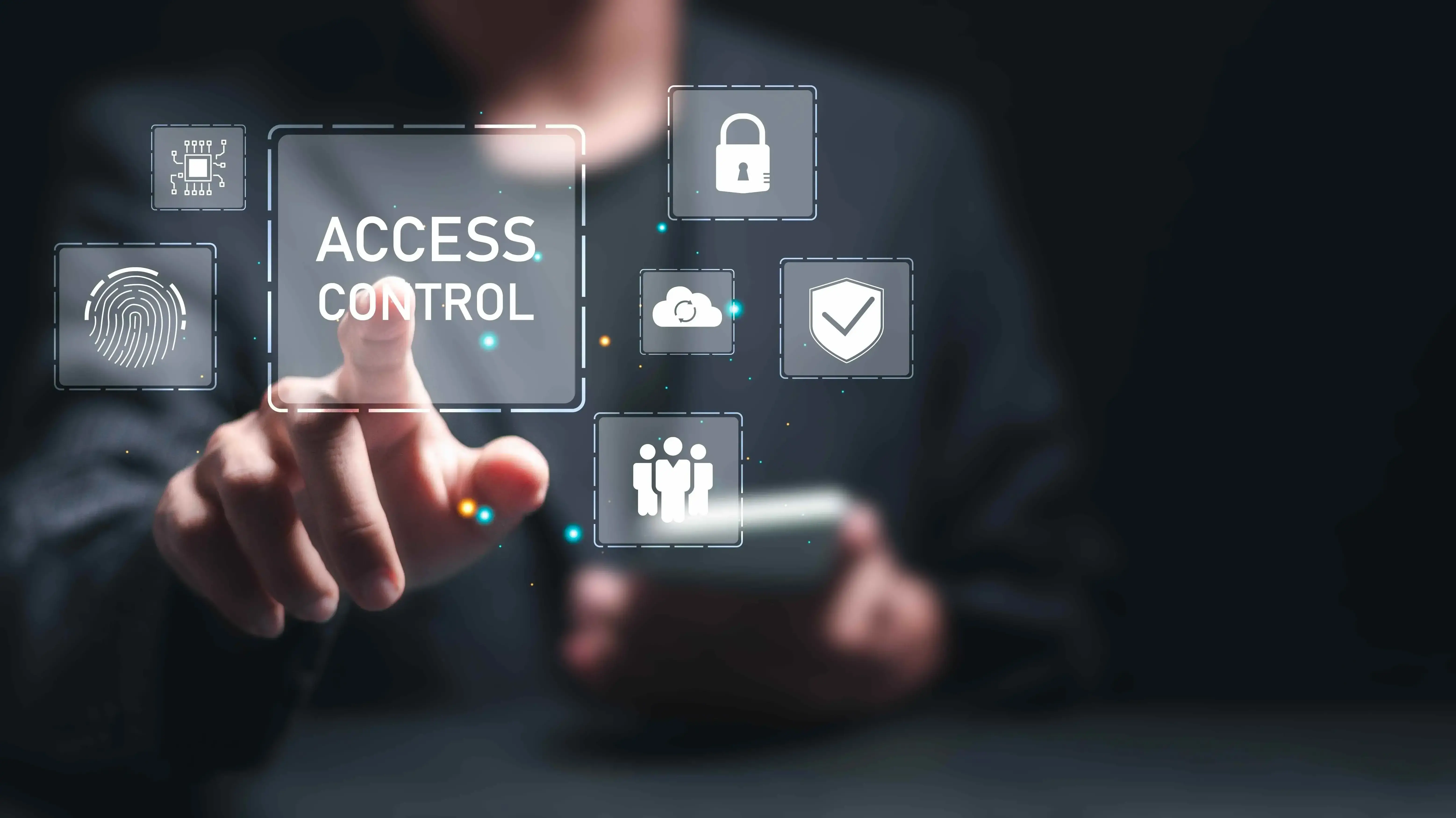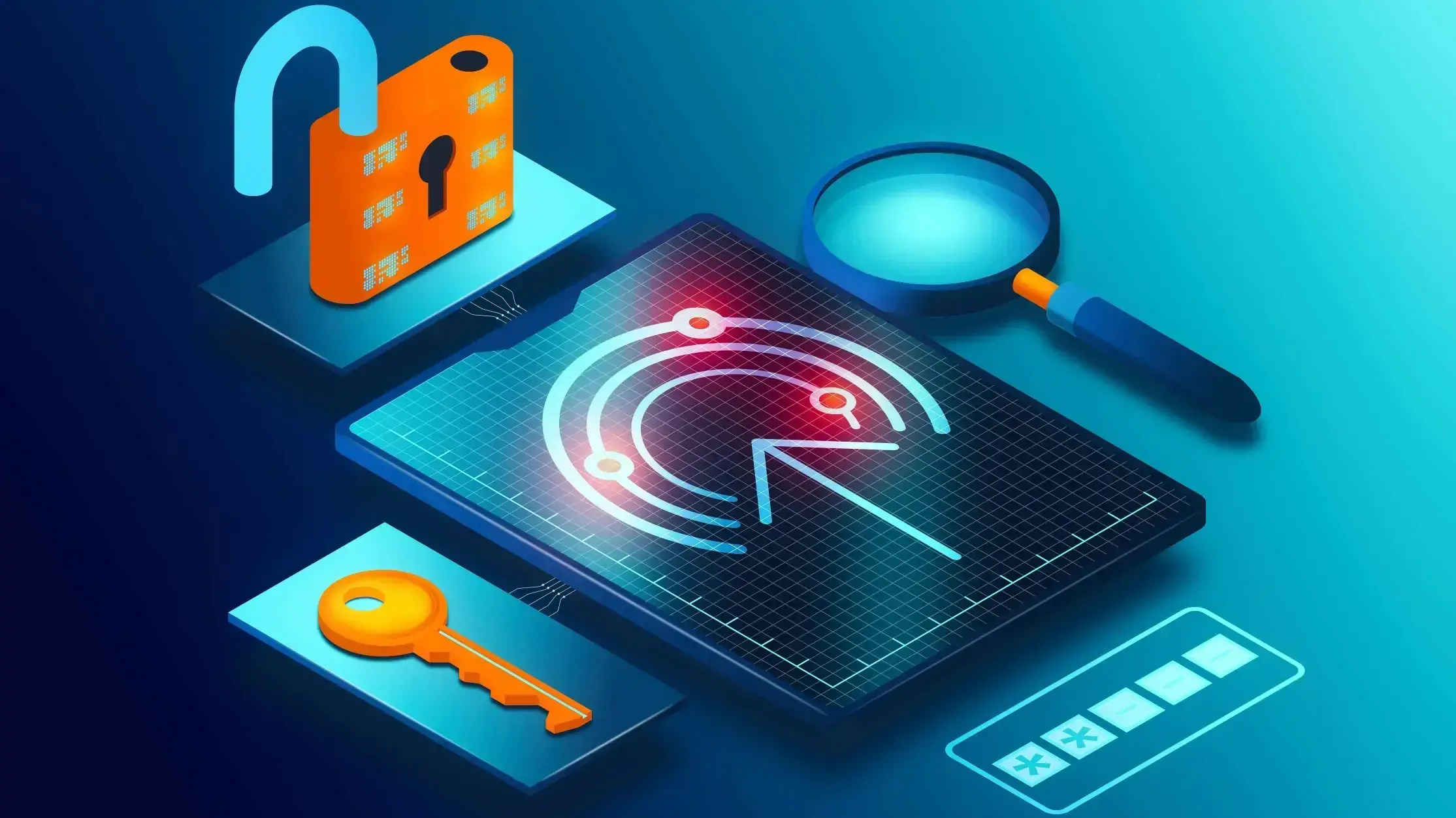Ever wonder how companies ensure the right people get access to the right data while keeping the wrong ones out? A framework known as Identity and Access Management tackles that challenge.
As technology becomes more deeply woven into the fabric of everyday business, employees log in from coffee shops, cloud apps store sensitive data, and cyber threats are constantly evolving.
Managing “who can access what” is more important than ever. Think of IAM as the digital gatekeeper of an organization that ensures that users are who they say they are and that they only access what they're allowed to.
In this article, we’ll explain IAM, why it’s crucial in today’s tech-driven environment, and how it helps businesses stay secure, compliant, and efficient.
What is IAM?
Identity and Access Management (IAM) is a framework of policies, processes, and technologies that ensures the right individuals in an organization have the appropriate access to technology resources.
Let’s break that down a bit.
Think of IAM as your company’s digital bouncer. Just like a nightclub checks your ID before letting you in, IAM systems verify your identity before granting access to sensitive systems, files, or applications.
But it doesn’t stop there. Once you’re “in,” IAM also decides what parts of the club (or network) you’re allowed to go into and what actions you can take, like reading a file, editing a database, or accessing internal tools.
IAM systems handle things like:
- Creating and managing user accounts and roles
- Authenticating users through passwords, biometrics, or multi-factor authentication
- Authorizing users based on roles or policies
- Tracking who accessed what, and when
Core Components of IAM
IAM might sound like a single tool or platform, but it’s made up of several moving parts that work together to secure access and identities.
Let’s take a look at the core components that make Identity and Access Management function effectively:
1. Identity Management
This is the foundation of IAM. Identity management involves creating, maintaining, and deleting user identities across a company’s systems.
When someone joins an organization, a digital identity is created for them, usually including a username, email, job title, and department. Over time, this identity might be updated with new roles or permissions, and when they leave the company, their access needs to be revoked promptly.
To keep everything organized and consistent, identity management often relies on directory services as LDAP (Lightweight Directory Access Protocol) and Microsoft Active Directory.
These directories store user information in a centralized way, making it easy to manage identities across multiple systems.
2. Authentication
Once an identity is created, authentication is confirming that the person trying to log in is actually who they say they are.
Common methods of authentication include:
- Passwords
- Biometrics
- Multi-Factor Authentication
3. Authorization
After a user is authenticated, the next step is authorization, deciding what they’re allowed to do.
For example, an HR manager might be authorized to view employee records, but not access financial systems. This is usually managed through roles (like “Admin” or “Editor”) and policies (rules that define what access is granted under certain conditions).
4. Access Management
Finally, access management is all about controlling and monitoring access to systems and data in real time.
This includes:
- Granting or denying access to resources on the spot
- Logging access activity for auditing
- Automatically revoking access when it’s no longer needed
Access management tools may also alert security teams if someone tries to access something they shouldn't, helping organizations respond to threats quickly.
How IAM Works
Now that we understand the building blocks of Identity and Access Management, let’s see how it all comes together in action. Here’s a simple breakdown of how IAM typically works:
Step 1: A User Tries to Log In
It all starts when someone attempts to access a system, say, an employee opening the company dashboard.
Step 2: Authentication
The IAM system steps in to verify the user’s identity. Depending on the setup, this might involve:
- Entering a username and password
- Providing a fingerprint scan
- Entering a one-time passcode sent via email or text
Step 3: Authorization
Once the user’s identity is confirmed, the system checks what that user is allowed to access. This is based on their role, department, location, or even the time of day.
For instance, a marketing manager might have access to campaign tools but not financial reports.
Step 4: Access Granted (or Denied)
If the user meets all the criteria, they get access to the appropriate resources. If not, access is denied, and in some cases, if the attempt seems suspicious, it is flagged for review.
Step 5: Monitoring and Logging
Every action is logged and monitored. This helps with:
- Security audits
- Detecting unusual behavior
- Meeting compliance requirements
Benefits of IAM

Implementing an Identity and Access Management system isn’t just about keeping hackers out. It’s about building a smarter, more efficient, and secure organization.
Here are the benefits of IAM:
1. Stronger Security
IAM helps eliminate one of the biggest risks in cybersecurity: unauthorized access. By verifying users' identities and limiting what they can do, IAM drastically reduces the chances of data breaches, insider threats, and credential abuse.
Features like multi-factor authentication and automated de-provisioning (revoking access when someone leaves the company) add extra layers of protection.
2. Better User Experience
Ever get frustrated juggling multiple passwords? IAM solutions often include tools like Single Sign-On, allowing users to log in once and access all their authorized applications without repeated logins.
This makes daily workflows smoother and saves valuable time across the organization.
3. Compliance Made Easier
Many industries like healthcare, finance, government, are required to follow strict data privacy regulations like GDPR, HIPAA, or SOX.
IAM systems help organizations meet these standards by:
- Enforcing access policies
- Keeping detailed logs of who accessed what and when
- Making audits faster and more accurate
4. Operational Efficiency
With IAM, managing user access no longer requires manual work or IT bottlenecks. You can automate tasks like:
- Onboarding and offboarding users
- Updating access when someone changes roles
- Performing regular access reviews
This reduces errors, saves time, and ensures everyone has the right access without delays or risks.
5. Reduced Risk of Insider Threats
Not all threats come from outside. Sometimes, employees or contractors intentionally or accidentally cause harm by accessing data they shouldn’t.
IAM reduces this risk by enforcing the principle of least privilege, which means users only get the access they need to do their jobs, nothing more.
Common IAM Technologies and Tools
Over the years, several powerful tools and techniques have emerged that make IAM systems more secure, flexible, and user-friendly.
Let’s look at some of the most common IAM technologies and tools organizations use today:
1. Single Sign-On
Single Sign-On allows users to log in once and gain access to multiple systems without needing to authenticate again for each one.
It simplifies the user experience and reduces password fatigue, which also lowers the risk of weak or reused passwords.
For example, once an employee signs into their company account, SSO can give them access to email, project management tools, file storage, and other authorized services—all without repeated logins.
2. Multi-Factor Authentication
Passwords alone aren't enough anymore. Multi-Factor Authentication adds an extra layer of security by requiring two or more forms of verification. This might include:
- Something you know (password)
- Something you have (smartphone or security token)
- Something you are (fingerprint or facial recognition)
MFA is one of the simplest and most effective ways to protect against stolen credentials.
3. Role-Based Access Control
RBAC assigns permissions based on a user’s job role, rather than individual preferences. For example, a sales representative role might have access to customer relationship tools but not payroll systems. This makes managing permissions easier and more consistent across large organizations.
4. Identity Federation
Federation allows users from different organizations or domains to access shared systems using a single identity. This is useful in partnerships, mergers, or situations where vendors need limited access.
A common example is using your Google or Microsoft account to log into third-party applications, thanks to federated identity standards like SAML or OAuth.
Challenges in IAM Implementation
While Identity and Access Management (IAM) offers major benefits, implementing it isn't always easy.
Understanding the common challenges can help businesses prepare, avoid mistakes, and build a stronger IAM foundation.
1. Complexity of Integration: Many businesses rely on a mix of legacy systems, cloud apps, third-party tools, and in-house software. Getting all of these to work smoothly with a single IAM solution can be complex and time-consuming. For example, integrating IAM with older platforms that don’t support modern authentication protocols might require custom development or workarounds.
2. User Resistance: Change can be hard, especially when it involves how people log in and do their jobs. Users might resist new authentication steps, see IAM tools as inconvenient, or struggle with new access processes. Without proper training and communication, even the best IAM system can fall flat because of poor adoption.
3. Balancing Security and Usability: There’s always a trade-off between tight security and a smooth user experience. Stronger protections like multi-factor authentication or strict access controls are essential, but if they frustrate users, they might look for ways to bypass them (which defeats the purpose).
4. Role and Permission Mismanagement: If roles and permissions aren’t clearly defined or regularly updated, users can end up with too much access (a security risk) or too little (a productivity blocker). This issue, known as “permission creep,” often happens when users change departments but retain old access rights. Regular access reviews and well-planned role-based access control can help, but they require time and discipline.
Final Thoughts
As organizations grow more connected and digital operations become the norm, managing who has access to what has never been more important. That’s where Identity and Access Management becomes not just helpful, but essential.
IAM ensures that only the right people can access the right resources at the right time, helping protect sensitive data, reduce security risks, and support regulatory compliance.
But beyond security, IAM also improves operational efficiency and delivers a smoother experience for users.
Of course, implementing IAM isn’t without its hurdles. From integrating with legacy systems to getting user buy-in, there are real challenges.
But with the right strategy and tools, those challenges can be overcome, and the rewards are well worth the effort.
Frequently Asked Questions
What is SSL security?
SSL stands for Secure Sockets layer, and it is a protocol that is frequently used to communicate information online in a secure way.
Does WooCommerce have security issues?
WooCommerce itself doesn't have security issues, but every platform is susceptible to attacks. You can use WooCommerce's core security features, which are derived from WordPress – but you also need to take the initiative.
Can biometric security replace traditional passwords?
Biometric security can enhance or replace traditional passwords, offering a more secure and user-friendly authentication method. However, a combination of biometrics and passwords (multi-factor authentication) is often recommended for enhanced security.
How does payment tokenization enhance payment security?
By replacing sensitive data with non-sensitive data, payment tokenization minimizes the risk of data breaches. The encrypted data in the form of payment tokens ensures that even if intercepted, the information is useless to hackers, thereby enhancing overall payment security.

Nile Flores is a long time professional blogger, as well as WordPress website designer and developer from the St. Louis Metro East. Nile blogs at NileFlores.com, where she’s passionate about helping website owners, whether they’re small business owners or bloggers. She teaches about Blogging, Social Media, Search Engine Optimization, Website Design, and WordPress. Additionally, Nile loves to speak at WordCamps (WordPress conferences) across the United States. When Nile isn’t knee-deep in coding, she’s a proud mom of a college student, and enjoys oil painting, cigar smoking, nail art design, and practicing traditional Okinawan kempo karate.
View all posts by Nile Flores




















